Researcher Spotlights
Previous researcher spotlights are featured here.
CAN Researcher Spotlight: Dr. Zahinoor Ismail, University of Calgary
Dr. Zahinoor Ismail has a keen eye for connections where others may not notice them. He’s building links between his research and clinical work, and also in his vision for the future of neuropsychiatry.
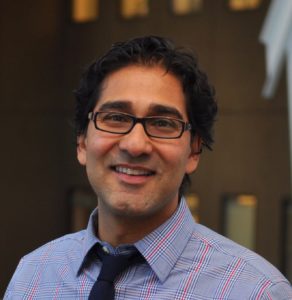 “The brain is so connected to the body,” says Dr. Zahinoor Ismail, a clinician scientist and Associate Professor at the University of Calgary’s Cumming School of Medicine.. “We’re learning more about those connections through the gut biome and how our intestinal flora connects with our brain and can change behaviour…it’s just incredible.”
“The brain is so connected to the body,” says Dr. Zahinoor Ismail, a clinician scientist and Associate Professor at the University of Calgary’s Cumming School of Medicine.. “We’re learning more about those connections through the gut biome and how our intestinal flora connects with our brain and can change behaviour…it’s just incredible.”
Dr. Ismail devotes his days to conducting research and seeing patients, a dynamic mix he describes as “fascinating work.” His research integrates neurology and psychiatry and ranges from understanding cognitive decline in dementia to imaging and biomarkers of neuropsychiatric symptoms to clinical trials.
Despite the wide range of his projects, Dr. Ismail approaches them with a similar perspective that links the connections between neurology and psychiatry to the bigger picture. “In dementia prevention clinical trials, psychiatric illness is often excluded,” he notes. “Psychiatric illnesses are often conflated into a large mass. They’re psychiatric or they’re not.”
Causation is often wrongly attributed to chronic illness, but when investigators focus on new-onset neuropsychiatric symptomatology at the mid- and late-life stages, something different may be revealed, including neurological causes of psychiatric symptoms.
Following the links to become a clinician scientist
Despite his ease in describing these connections now, Dr. Ismail says his work didn’t begin with this multifaceted approach.
“I started my professional life as a heavy-duty clinician,” he says. “After six years, I saw research areas that were really interesting and relevant. That’s when I started pursuing research, changing my perspective, and since then, slowly and surely, have transformed into a clinician scientist.”
Now, his clinical experiences with patients inform his scientific explorations.
The firsthand experience gained on the journey to interdisciplinary work gives Dr. Ismail keen insights, and he advises aspiring researchers and clinicians to work at the crux of more than one discipline instead of being locked into an academic box.
“Be open-minded to input from other disciplines,” he says, “because our traditional silos are breaking down. All of our fields really affect one another, so we should collaborate and listen to each other across disciplines much more.”
Doing that will require a re-ignited curiosity, which Dr. Ismail says is crucial to progress, because there is always more to learn. “We have to embrace neuroscience in psychiatry to inform our understanding of illness,” he says, adding: “Psychiatry and neurology are converging once again, and I think that’s a really good thing.”
Dr. Ismail is one of the founding members of the Dementia Care Research Initiative (DCRI), an integrated partnership creating knowledge-based improvements to the care pathway of Albertans with cognitive impairment and dementia. Facilitated through Campus Alberta Neuroscience, DCRI aims to enhance near-term outcomes through focused research and solutions in primary, acute and long-term care to improve quality of life and care and to decrease resource burdens on the health system.
CAN Researcher Spotlight: Dr. Aaron Gruber, University of Lethbridge
As a field, neuroscience asks big questions about how the brain works — but answering those big questions typically necessitates many smaller inquires. For Dr. Aaron Gruber, these inquiries are key to unlocking the mysteries of the brain.
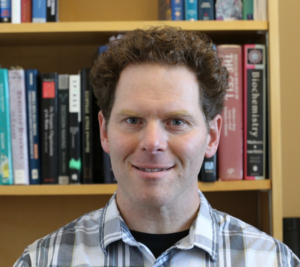 As a field, neuroscience asks big questions about how the brain works — but answering those big questions typically necessitates many smaller inquiries.
As a field, neuroscience asks big questions about how the brain works — but answering those big questions typically necessitates many smaller inquiries.
For Dr. Aaron Gruber, Associate Professor at the University of Lethbridge’s Canadian Centre for Behavioural Neuroscience, these inquiries are key to unlocking the mysteries of the brain.
“Every neuroscientist would love to discover how the brain works, but that is a huge problem,” Dr. Gruber notes. “You need to pick a starting point on a tractable sub-problem.”
Dr. Gruber’s starting point is to understand how neural systems impact decision-making. Although he began his academic journey in chemical engineering, he now focuses on reinforcement learning and knowledge synthesis. He investigates the disruption of dopamine signalling, which he says is at the crux of several neuropsychiatric disorders, including addiction, depression and schizophrenia.
At the moment, his research centres on addictions like gambling and substance abuse, and specifically on what motivates people to do seemingly irrational things that can lead to these addictions.
“The first step in addressing the problem is to understand what’s going on in the brain — to understand the nuts and bolts under the hood,” Dr. Gruber explains. “Once we understand how it works, we’ll be able to use the least-invasive tools to address neuropsychiatric disorders.”
With this knowledge, he envisions a future where early interventions and personalized medicine prevent individuals from falling into crises from which interventions may take years to have an effect.
Crossing discipline boundaries
While answering these specific questions will help to better understand the brain, to get there, Dr. Gruber asserts, “We’re going to have to get more interdisciplinary.”
This approach leverages powerful tools from traditionally separate disciplines, and includes using imaging and molecular or genetic tools to collect rich datasets, and advanced computational techniques, such as machine learning, to analyze data.
“As experimental techniques become more sophisticated and we are able to monitor more processes,” he notes, “we will increasingly need to rely on computer algorithms to make sense of the data.”
Dr. Gruber is confident the research landscape in Alberta has potential to develop such multidisciplinary projects. “As a province, we have the people to do this. I think it’s a matter of getting people together from engineering, life sciences and the medical community.”
This is where the contribution and value of Campus Alberta Neuroscience (CAN) is greatest, as its central philosophy is bringing together people from a variety of disciplines and perspectives to advance science.
Dr. Gruber augments CAN by bringing his enthusiasm for a multidisciplinary approach to his roles on the Steering Committee and as Chair of this year’s Symposium Scientific Program Committee.
Preparing future scientists
Dr. Gruber also advocates for cross-discipline education and training, and is a member of the committee designing CAN’s future multidisciplinary initiatives.
“I’m really keen to bring in medical residents, particularly some of the psychiatric residents, to get them involved in training and research,” he explains. “This enables researchers to see the clinical side, and clinicians to tap into what we know on the basic sciences side.”
That emphasis furthers Dr. Gruber’s efforts to teach and prepare the next generation of scientists. On top of his research and regular teaching, he is also an instructor at the annual Introductory Workshop on Computational Methods in Neuroscience, a program hosted at the University of Lethbridge for trainees from across Alberta.
At the end of the day, Dr. Gruber aims to make a positive contribution to discovering how the brain works, not only by adding to the overall body of knowledge to strengthen the foundation for translational work, but also by pushing students and trainees to think critically as scientists and citizens.
CAN Researcher Spotlight: Dr. Stephanie Borgland, University of Calgary
Being a scientist is like being a painter, says Dr. Stephanie Borgland. “It’s a creative job. You play with lots of ideas and synthesize other people’s ideas to put together a puzzle.”
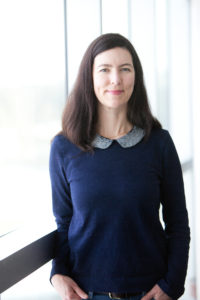 Being a scientist is like being a painter, says Dr. Stephanie Borgland. “It’s a creative job. You play with lots of ideas and synthesize other people’s ideas to put together a puzzle.”
Being a scientist is like being a painter, says Dr. Stephanie Borgland. “It’s a creative job. You play with lots of ideas and synthesize other people’s ideas to put together a puzzle.”
Dr. Borgland’s puzzle is the orbital frontal cortex. Research in her lab, based at the University of Calgary’s Hotchkiss Brain Institute, is focused on motivated behaviours and their underlying neuro-circuits. She works primarily on addiction and obesity, looking at the mechanisms that might lead to changes to the orbital frontal cortex as a result of these behaviours.
“Understanding those circuits is really important because it applies to very common, debilitating disorders like addiction and, in some cases, eating disorders and obesity,” she says.
Encouraging tomorrow’s scientists
As a child, Dr. Borgland didn’t think about becoming a researcher. “I never imagined being a scientist, because I didn’t realize that being a scientist is an extraordinarily creative job.” Now as an Associate Professor, Dr. Borgland offers insights gleaned through her own experience to help inspire future scientists.
She believes new scientists and recent graduates are often intimidated by the field and don’t feel like they belong. “They don’t have that confidence to imagine themselves in that kind of role because there’s this assumption that everybody is brilliant, and I don’t think that’s necessarily the case,” she says.
“It’s a job that rewards hard work and people who are particularly creative.”
The creativity inherent in the job motivates Dr. Borgland. “To me, it’s like a blurry picture that is slowly becoming more refined. It’s a creative process and I find that discovery aspect really fun.”
The Campus Alberta Neuroscience connection
Dr. Borgland brings her passion for discovery to her work with Campus Alberta Neuroscience (CAN), where she contributes as a reviewer for the Academic Exchange Program. She is also a member of the working group developing CAN’s future initiatives in education. From the latter, she sees the future landscape of neuroscience, including a diversity of perspectives as people from different disciplines move into the field.
“When you embrace different perspectives, the field can progress a lot,” she notes. “Campus Alberta Neuroscience is going to play an important role in that.”
She also sees an opportunity for big learning in neuroscience’s future. “There’s been this boom in technology applied to neuroscience that allows us to view things at a greater resolution and that’s really exciting. The next revolution is being able to deal with the data associated with it.”
Encouraging and encouraged by diversity
For Dr. Borgland, embracing a variety of perspectives means more than just including different academic backgrounds. She’d like to see further proactive policies put into place to ensure more women become Principal Investigators (PI), for example, because “having more women in PI positions will benefit neuroscience.”
“We have a lot of female postdoctoral fellows who train, but when we post positions, only a quarter of the applications come from women,” she notes, adding that since close to 50 percent of the postdoctoral fellows in University of Calgary’s neuroscience department are women, “there’s some attrition happening there.”
Exploring new paths
It’s not difficult to see Dr. Borgland’s penchant for creativity in the innovative work she undertakes. She enthusiastically describes her next project on anorexia nervosa, which includes something that is not so familiar to her: a strong translational component. She will work with the Mathison Centre for Mental Health Research and Education at the University of Calgary to investigate whether characteristics of this disorder engage the same circuits in the brain that underlie compulsive disorders.
Research, Dr. Borgland says, is a journey completed over time and with stops along the way to appreciate the process and the achievement. “It’s a bit like mountaineering. It seems like you’re making very incremental progress and then all of a sudden you’re at the top of the mountain. But, of course, getting to the top of a mountain is never just a walk up.”
CAN Researcher Spotlight: Dr. Ian Winship, University of Alberta
Collaborating to find the answers to tough questions in neuroscience, neurology and psychiatry — and to improve the lives of people who have suffered a stroke or are living with schizophrenia.

Dr. Ian Winship is an Associate Professor in the Department of Psychiatry at the University of Alberta and Director of its Neurochemical Research Unit (NRU).
“The NRU has an established expertise in neurochemistry and psychopharmacology, and our vision is to improve brain health through cutting-edge research,” Dr. Winship explains. “We ask questions on the fundamental neurobiology of psychiatric and neurological diseases and work to develop better therapies for these brain disorders.”
Over the last five years, Dr. Winship has focused on stroke research, looking for ways to reduce brain damage early after stroke and improve recovery in the weeks that follow. His studies of collateral blood flow investigate alternate routes blood can take to areas of the brain affected at the time of a stroke.
“It’s important to look at whether we can use these collateral channels to increase blood flow to tissue that’s at risk of dying — to keep it alive or prevent damage from happening at all.”
Recently, Dr. Winship has expanded his research portfolio to include studies into the developmental neuropathology of schizophrenia, with a particular interest in how pathology in the prefrontal cortex may lead to cognitive impairments associated with schizophrenia.
Dr. Winship sees education and collaboration as vital to future advancements. “We have a strong neuroscience community here in Alberta, and it makes sense to look provincially first to find people who are doing great work,” he notes. “Then build on these local connections so we can answer some of these really big, tough questions in neuroscience, neurology and psychiatry.”
As part of Campus Alberta Neuroscience’s (CAN) Nervous System Injury team, Dr. Winship is part of a network connecting researchers across Alberta who specialize in spinal cord injuries, traumatic brain injuries, rehabilitation and nervous system regeneration. With support through CAN, he hopes to create a stroke research group that brings top researchers together from the Universities of Alberta, Calgary and Lethbridge.
Dr. Winship is also a member of CAN’s Education Committee where he’s helping steer the course of education initiatives. Over the last several years, the Education Task Force has developed several exciting initiatives for students and trainees across Alberta. “The goal is to see what’s outstanding at each institution and look at how we can facilitate sharing that with the rest of the province.”
CAN’s education programs and workshops enhance and expand the knowledge of trainees and postdoctoral fellows. Recent Education Task Force initiatives include the Introductory Workshop on Computational Methods in Neuroscience, held annually in Lethbridge, the Postdoctoral Fellowship Program and the Trainee Retreat.
CAN Researcher Spotlight: Dr. Artur Luczak, University of Lethbridge
For Dr. Artur Luczak, being a neuroscientist means charting new territory. “It’s like being one of the pioneers discovering western North America and going where nobody has ever gone before…we still don’t know so many things.”
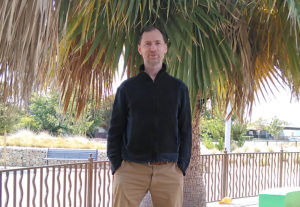 For Dr. Artur Luczak, being a neuroscientist means charting new territory. “It’s like being one of the pioneers discovering western North America and going where nobody has ever gone before…we still don’t know so many things.” Dr. Luczak embodies this sense of pioneering with his research on neuronal activity.
For Dr. Artur Luczak, being a neuroscientist means charting new territory. “It’s like being one of the pioneers discovering western North America and going where nobody has ever gone before…we still don’t know so many things.” Dr. Luczak embodies this sense of pioneering with his research on neuronal activity.
Dr. Luczak’s lab uses multi-site silicon microelectrodes to simultaneously record activity in the cortex and subcortical structures to help understand information processing and memory formation in the brain. They investigate how neurological disorders like epilepsy distort the relationship between neuronal populations. He has also showed how neuronal activity in the cortex is composed of stereotypical sequential patterns, which he calls “neuronal packets”.
Dr. Luczak heads the Neuronal Data Analytics Lab and is an Associate Professor at the University of Lethbridge. At the moment, however, he is currently a Visiting Associate Professor while on a one-year sabbatical at Stanford University. He is also one of five instructors for the Introductory Workshop on Computational Methods in Neuroscience, held last June at the University of Lethbridge. The annual workshop is made possible through a partnership between Campus Alberta Neuroscience and the University of Lethbridge’s NSERC CREATE Biological Information Processing Program. He was also involved with planning CAN’s fourth annual symposium in 2015. “It was a great success to bring scientists from all universities across the province to better know each other. I think Campus Alberta Neuroscience is doing a great job to make Alberta neuroscience more than just the sum of its parts.”
An early interest in science set Dr. Luczak on the path he is on today. “Since kindergarten I was interested in why trees grow, how our bodies work… and now I consider myself very lucky to get paid for spending entire days thinking about how our brains function.” His efforts have not gone unnoticed. Dr. Luczak was recently elected to the Royal Society of Canada’s College of New Scholars, which is the first national system of multidisciplinary recognition for emergent intellectual leadership. Membership is made up of Canadians and permanent residents who have demonstrated a high level of achievement at an early stage in their career.
Considering this wealth of experience, what advice does Dr. Luczak offer to aspiring researchers? Keep trying. “One thing I’ve learned from doing science is that it’s hard. Most ideas are wrong and many experiments go nowhere.” But the key, he says, is to be persistent and not become discouraged by failure. “Only people who don’t try avoid failure. In science we are trying to find answers to questions nobody has answers to. Most of our approaches fail but it’s very satisfying when we get things right.”
Dr. Luczak says that Alberta’s neuroscience research field seems to be one of the strongest in Canada, but neuroscience in general has a lot of growing to do. “We gather a lot of different observations in neuroscience, but we still don’t have a unified theory of how the brain works.” But he is hopeful. “Before, people understood movement of planets it was necessary first to collect hundreds of thousands of observations. Those observations led to the idea that the orbits of planets around the sun are elliptic, which became crucial for coming up with the laws of planetary motion. Similarly in neuroscience, we are now collecting a lot of information on how the brain works but we still don’t have a general rule explaining how those pieces work together. I hope to see us achieve that in my lifetime.”
CAN Researcher Spotlight: Dr. David Euston, University of Lethbridge
Dr. David Euston’s interest in science was sparked at a young age. “I was always interested in the deepest mysteries, like what’s the nature of the universe?” He went on to complete an undergraduate degree in physics and, along the way, discovered another great mystery: the mind.
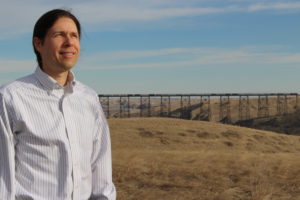 Dr. David Euston’s interest in science was sparked at a young age. “I was always interested in the deepest mysteries, like what’s the nature of the universe?” He went on to complete an undergraduate degree in physics and, along the way, discovered another great mystery: the mind. He began taking psychology courses and eventually, as he says, “drifted” into neuroscience, “because [he] wanted to get at the what makes the mind work and that, of course, leads you to the brain.”
Dr. David Euston’s interest in science was sparked at a young age. “I was always interested in the deepest mysteries, like what’s the nature of the universe?” He went on to complete an undergraduate degree in physics and, along the way, discovered another great mystery: the mind. He began taking psychology courses and eventually, as he says, “drifted” into neuroscience, “because [he] wanted to get at the what makes the mind work and that, of course, leads you to the brain.”
Dr. Euston received his Ph.D. in Psychology from the University of Oregon in 2000. His research, under the direction of Terry Takahashi, investigated the computation of sound source location in barn owls. His postdoctoral work investigated multi-electrode recordings from the hippocampus and frontal cortex in the lab of Bruce McNaughton at the University of Arizona from 2000-2007. In 2008, he joined the University of Lethbridge and is now an Associate Professor at the Canadian Centre for Behavioural Neuroscience (CCBN). “The faculty at the CCBN are at the forefront of behavioural neuroscience. It is a privilege to work among such talented colleagues.”
Dr. Euston’s current research uses rodent models to understand functions of the prefrontal cortex. One of his projects focuses on the frontal cortex’s role in vocalization and developing what he refers to as a “dictionary of rat language” to correlate calls with certain behaviours. His team is investigating if contextually appropriate behaviour is indeed governed by the frontal cortex. “We’ve been correlating the calls with specific behaviours. It’s been a lot of fun. Who knew that when an animal is jumping they’re giving a particular type of call and when they approach another animal they gave a different type of call?” His lab recently discovered how these calls are tied to specific actions, something that has never been shown before.
Dr. Euston is also working on building a model of gambling in the rat to understand behavioural addiction. The challenge, he says, is to build a viable model. “It’s a really tricky thing to capture aspects of human gambling addiction in an animal model.” Dr. Euston and his team think that “surprise” is a key aspect of gambling addiction. When someone wins money at a video lotto terminal (VLT), the surprise kicks the reward system into overdrive, and “that might be the crux of what makes gambling so sticky”.
Dr. Euston is also one of the five instructors of the Introductory Workshop on Computational Methods in Neuroscience, which took place for the third time this past summer at the University of Lethbridge. “It’s a great way to facilitate communication across Alberta. I’ve definitely made a lot of contacts with faculty in the other schools that I would never been able to get to know…that’s been a really neat experience.” The annual workshop is made possible through a partnership between Campus Alberta Neuroscience and the University of Lethbridge’s NSERC CREATE Biological Information Processing Program.
When asked what advice he would give to aspiring researchers, Dr. Euston chuckles and says, “Well, learn a lot of math.” He stresses the importance of quantitative and technical skills like programming, statistics, genetic engineering, etc. “Neuroscience draws on many other fields of science, so a strong background in these subfields is tremendously important. Ultimately, to make progress you end up collaborating with people with different areas of expertise, but the more you can learn about each area, the stronger you’ll be.”
Discovering this field’s complexity is one of the biggest lessons learned, Dr. Euston says, during his academic journey. “When you come into the field, you think that the answers are just around the corner. But the more you get into it the more you realize that it’s a huge, huge thing, and it’s going to be years before we ever understand how the mind works. It’s really humbling.” But he is not paralyzed by this uncertainty. In fact, this thirst for discovery is what drives Dr. Euston to continue his work. “Every time you turn a new scientific corner and you see some new finding it’s so exciting, whether it’s in your own lab or whether you’re reading something in Science or Nature, you think ‘oh my gosh, that is so cool.’”
Neuroscience is a budding field, Dr. Euston says with great optimism, and research on the frontal cortex is even younger. “We are still kind of groping in the dark. We don’t really have a clear picture of exactly what’s going on in the frontal cortex at a computational level. What are the inputs of the frontal cortex, what are the outputs? We don’t know, but I would really love to find out.”
CAN Researcher Spotlight: Dr. William Colmers, University of Alberta
Dr. William Colmers has been at the University of Alberta since 1988. He is a Professor of Pharmacology and Neuroscience, as well as a distinguished Alberta Heritage Foundation for Medical Research Medical scientist.
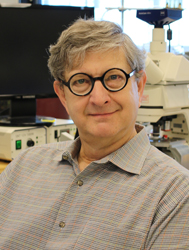
Through his lab, Dr. Colmers has spent the last 30 years studying neuropeptides and the role they play in energy balance, obesity, and the wasting syndrome called cachexia. Neuropeptides, which act as signaling molecules in the brain, enable neurons to communicate complex information with each other. “Neuropeptide Y, for example, has the ability to work as an antiepileptic in one part of the brain, while regulating appetite in another,” Dr. Colmers explains.
Dr. Colmers’ work with neuropeptides has helped shed new light on cachexia, a condition that makes weight gain impossible — and catastrophic weight loss inevitable — for people suffering from cancers, emphysema, chronic heart disease and a variety of other chronic illnesses.
“For a long time, nobody actually thought it involved the brain,” Dr. Colmers points out. “About 99% of the studies conducted on it are related to muscle and fat metabolism, and although they are part of it, we have really good evidence that the central nervous system controls most of the processes.”
While Dr. Colmers’s lab continues its work into understanding cachexia and identifying disruptions in brain functions related to energy balance, it has also expanded its research to include anxiety. For the last six years, he has collaborated with colleagues at Chicago Medical School to understand the role Neuropeptide Y plays in reducing and regulating anxiety.
Through their collaboration, Dr. Colmers hopes to develop new treatments for anxiety-related conditions like post-traumatic stress disorder, obsessive-compulsive disorder and depression. “We’ve made some very exciting progress,” he says. “This is the first time anybody has seen a treatment for anxiety-related disorders that’s had prolonged and profound actions.”
As chair of the CAN Program Review Committee, Dr. Colmers plays a key role in assessing grants and fellowships awarded to academics and young scientists across Alberta. “Our duty is to make sure science is done well and to encourage good science through these important programs,” he says of the various educational initiatives and funding support programs CAN offers. From the Trainee Mobility Program to the newly launched Postdoctoral Fellowship Program, CAN continues to foster unique and important partnerships throughout Alberta.
“There’s a lot of talent in Edmonton, Lethbridge and Calgary independently, but we’re all stronger when we collaborate.”
CAN Researcher Spotlight: Dr. Gerlinde Metz, University of Lethbridge
Looking across generations and throughout lifespans to understand the origins of disease — identifying health risks earlier to make a difference later in life.
Dr. Gerlinde Metz is a Professor at the Canadian Centre for Behavioural Neuroscience (CCBN) at the University of Lethbridge where she was recently named the Board of Governors Research Chair for Healthy Futures. In addition to her work at CCBN, she also serves on Campus Alberta Neuroscience committees where she plays an integral role consulting on events and education initiatives across the province, and is a member of CAN’s Nervous System Injury Research Theme Group.
Her research focuses on what Metz calls a transgenerational stress model where she is investigating the origins of disease. “It’s pretty unique,” she says. “We study how diseases are being programmed from one generation to the next, which is something you hear in the news nowadays, but didn’t when we started our research 10 years ago.”
Through her animal model using rats, Metz and her team are looking at how the environment and lifetime experiences affect the risk of pre-term birth, anxiety, depression, cancers and other diseases across multiple generations. “We look across generations, and also across the entire lifespan,” Metz says. “We want to see how the good and the bad experiences of a mother can influence behaviour, brain development and chances of healthy aging in her offspring and future generations.
“Excessive stress can leave a physiological, epigenetic and genetic ‘footprint’ that can be passed down through multiple generations. If we develop an ability to read these footprints we’ll have a new tool that identifies who is at greater risk of stress-related diseases.”
Metz plans to advance the study from observing these generational changes to actively identifying the precise mechanisms that cause disease. “We want to identify causes and new predictive markers of disease so that, for example, you could take a drop of blood from a baby at birth and be able to predict the kind of health risks he or she may be prone to later in life. Then interventions can be applied early to reduce the risk.”
Through CAN’s Nervous System Injury Research Theme Group, Metz is part of a province-wide network of researchers working on spinal cord injuries, traumatic brain injuries, new rehabilitation techniques and nervous system regeneration. “Alberta is really fortunate for having these kind of networks as they bring the Universities of Lethbridge, Calgary and Alberta closer together and enhance the opportunities for student learning and multidisciplinary collaboration.”
Metz is looking forward to pursuing future collaborations with other researchers in the group. “These days, more than ever, we need to work in teams. We have more-complex projects, but also most funding opportunities seek a team-based approach. It’s good to have a collaboration that’s already ongoing and productive so we can jump on these opportunities. Campus Alberta Neuroscience has recognized the need to support team formation and its programs come at a very important time for Alberta’s research community.”
CAN Researcher Spotlight: Dr. Chantel Debert, University of Calgary
Dr. Chantel Debert is an Assistant Professor at the University of Calgary in the department of Clinical Neurosciences. As part of Campus Alberta Neuroscience’s Nervous System Injury Research Theme Group, Debert is part of a province-wide network of researchers whose works focuses on spinal cord injuries, traumatic brain injury, rehabilitation, and nervous system regeneration.
Starting Dialogues with Campuses Across Alberta Leads to Opportunities for Collaboration.
Dr. Chantel Debert is an Assistant Professor at the University of Calgary in the department of Clinical Neurosciences. As part of Campus Alberta Neuroscience’s Nervous System Injury Research Theme Group, Debert is part of a province-wide network of researchers whose works focuses on spinal cord injuries, traumatic brain injury, rehabilitation, and nervous system regeneration. She is a physician lead for the Calgary Brain Injury Program where she’s responsible for developing and implementing research strategies.
Recently, Debert was named co-lead of the Hotchkiss Brain Institute’s (HBI) Brain Injury NeuroTeam. “Our role is to organize individuals interested in brain injury campus-wide, and bring them together to start discussions about research, grant opportunities, and fostering relationships between individuals who are interested in brain injury,” she says.
Through the HBI, Debert has recently secured a pilot grant to further her research into sport concussions and mild traumatic brain injury. “We will analyze clinically accessible bio-fluids to develop a quantitative metabolic profiling to aid in diagnosing and prognosticating outcomes in patients who suffered a sport concussion / mild traumatic brain injury. “
One of the researchers joining Debert in her study is Dr. Gerlinde Metz from the University of Lethbridge, a colleague she had not seen since working on an undergraduate project nearly 20 years ago. It was while speaking at Campus Alberta Neuroscience’s 2014 Symposium that Debert and Metz reconnected and quickly saw an opportunity to work together. “Gerlinde is a basic scientist and I’m a clinician, she has access to different resources and a complimentary knowledge base, it was a natural fit.”
“Through Campus Alberta Neuroscience I’ve fostered relationships with individuals at the University of Lethbridge” Debert says as she talks about the collaborative nature of her study. “If you start a dialogue with other campuses and researchers in other places they can bring such a wealth of information and a new outlook on the research you’re doing.”
CAN Researcher Spotlight: Dr. Chester Ho, University of Calgary
Dr. Chester Ho is Section Head of Physical Medicine and Rehabilitation in the Department of Clinical Neurosciencesat the University of Calgary. He is a member of the Hotchkiss Brain Institute, and also an associate professor in the university’s Cumming School of Medicine.
Complex Spinal Cord Injuries and A Holistic Approach
Dr. Chester Ho is Section Head of Physical Medicine and Rehabilitation in the Department of Clinical Neurosciences at the University of Calgary. He is a member of the Hotchkiss Brain Institute, and also an associate professor in the university’s Cumming School of Medicine.
Dr. Ho received his undergraduate and medical degrees at the University of Cambridge in England. After an internship in internal medicine at the Cleveland Clinic, he moved to Boston to train in Physical Medicine and Rehabilitation at Harvard Medical School and Spaulding Rehabilitation Hospital.
Dr. Ho’s main clinical and research interests include spinal cord injury rehabilitation and pressure ulcer prevention and treatment – a significant issue after spinal cord injury.
Working with patients with spinal cord injury issues that affect their entire body has led Dr. Ho to adopt a holistic approach to treatment.
“Instead of just treating one body organ system, you’re treating everything, and you really follow your patients for the rest of their lives, so you become very involved with their care and I like that.”
Dr. Ho is a member of Campus Alberta Neuroscience’s Nervous System Injury Research Theme Group. Their focus on exploring spinal cord injuries, traumatic brain injuries, advancements in rehabilitation, and nervous system regeneration was a perfect fit for Dr. Ho and his holistic approach. In 2014, Dr. Ho was an integral part of organizing CAN’s 2014 Symposium which focused heavily on Nervous System Injury and rehabilitation.
Dr. Ho is working with partners across Alberta, including Campus Alberta Neuroscience (CAN), to create a registry that will allow doctors and researchers to track the long-term outcomes and effects of spinal cord injuries. He hopes the registry will foster provincewide research collaborations and build the kind of strong foundations required to advance rehabilitation treatments and techniques.
CAN Researcher Spotlight: Dr. Keith Yeates, University of Calgary
Dr. Keith Yeates has been a professor of psychology and an adjunct professor of paediatrics and clinical neurosciences at the University of Calgary since the spring of 2014. Recently, with support from the Alberta Children’s Hospital Foundation, he was named the Ronald and Irene Ward Chair in Paediatric Brian Injury.
Dr. Keith Yeates has been a professor of psychology and an adjunct professor of paediatrics and clinical neurosciences at the University of Calgary since the spring of 2014. Recently, with support from the Alberta Children’s Hospital Foundation, he was named the Ronald and Irene Ward Chair in Paediatric Brian Injury.
“Over the years my work has focused on trying to better understand the outcomes of childhood brain disorders broadly, but particularly traumatic brain injury,” says Dr. Yeates, who brings over 20 years of research experience to the field.
Recently awarded a CIHR Foundation Grant, he’s currently developing a nationwide project that takes a broad sampling of neurobiological and psychosocial risk factors and examines the roles they play in predicting children’s trajectory of recovery following concussions. “We want to translate our findings into interventions that have the potential to prevent the persistent symptoms that a substantial subgroup of kids tend to have,” says Yeates.
After spending time working in the United States, Yeates found himself drawn to the collaborative opportunities Alberta has to offer. “That’s one of the reasons I came here, I think the research environment is more conducive to collaborative work than in the States.”
Yeates is a member of Campus Alberta Neuroscience’s Nervous System Injury Research Theme Group, where his focus on traumatic brain injury puts him in good company along with researchers exploring spinal cord injuries, developments in rehabilitation, and nervous system regeneration. As a new arrival to the Alberta neuroscience and mental health community, Yeates looks forward to developing new collaborations. “I just find you can’t do this sort of stuff without making it a team effort, and it’s fun to be able to do it with people from all over the province.”
Campus Alberta Neuroscience’s newly launched Postdoctoral Fellowship program is of particular interest to Yeates as he plans to build up his stable of graduate students and postdoctoral fellows. The program’s unique focus on multi-campus collaborations gives trainees and students access to exciting opportunities in labs across Alberta. “I’m excited about the possibility of bringing together all these people and providing the resources to get a handle on the big questions about concussions and traumatic brain injury because there’s still a lot we don’t know.”
